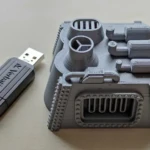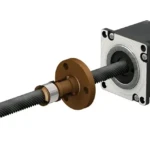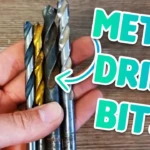Optimizing Fully Automatic Hydraulic Towers: A Comprehensive Guide to Troubleshooting Electrical Defects
In the realm of modern manufacturing, fully automatic hydraulic towers have emerged as a cornerstone of production, renowned for their precision and efficiency. However, the intricate electrical systems that power these machines are not immune to malfunctions, which can significantly impact production efficiency and product quality. Mastering the art of troubleshooting common electrical defects is crucial to ensuring the stable operation of these towers.
Understanding the Importance of Electrical System Maintenance
The electrical system is the backbone of a fully automatic hydraulic tower, governing every aspect of its operation. A malfunction in this system can have far-reaching consequences, including downtime, reduced productivity, and compromised product quality. Regular maintenance and prompt troubleshooting are essential to mitigate these risks and ensure that the tower operates at optimal levels.
Common Electrical Defects and Their Solutions
1. Power Supply Failure
Power failure is one of the most common issues plaguing fully automatic hydraulic towers. When the tower fails to start, the first step is to inspect the external power line for signs of damage, power outage, or short circuits. A multimeter can be employed to detect the supply voltage, and if the reading is abnormal, it is imperative to contact the electric service or an electrician for a thorough inspection.
If the external power supply is normal, the focus shifts to the power switch, fuse, and other internal components. In the event of a blown fuse, it is crucial not to replace it directly with a new one of the same specification. Instead, a thorough examination of the circuit is necessary to identify potential short circuits, such as insulation damage in the motor, transformer, or control circuit. Once the fault is identified and repaired, the fuse can be replaced, ensuring that the new one does not blow again.
2. Control System Failure
The control system is the central nervous system of the fully automatic hydraulic tower, and any malfunction in the PLC (Programmable Logical Controller) or CNC (Computer Numerical Control) system can result in abnormal operation. When the control system indicates an error, it is essential to carefully examine the error code on the operating panel and consult the equipment manual to understand the corresponding defect.
For instance, a servomotor alarm can be triggered by an overload of the servomotor, driver failure, or abnormal feedback from the encoder. Diagnostic tools can be utilized to detect whether the servomotor current, driver output voltage, and encoder signal are normal. If the servomotor current is too high, it may be necessary to check if the motor load is too heavy or if the mechanical transmission parts are blocked. If the driver is defective, the faulty driver can be identified through the replacement method and replaced or repaired. If the encoder feedback is abnormal, it is essential to check if the encoder connection line is loose or if the encoder is damaged and replace it if necessary.
3. Sensor Failure
Fully automatic hydraulic towers rely on a variety of sensors to monitor the operating condition of the equipment, including position sensors, pressure sensors, and more. Sensor failure can compromise the tower’s ability to accurately control machining sizes or result in abnormal movements. If the position sensor fails, the tower’s positioning accuracy will be affected, leading to increased machining errors.
An oscilloscope can be used to detect the sensor output signal and determine if the sensor is functioning normally. If the sensor does not produce a signal output, it is necessary to check if the power supply and connection cable are normal. If there is no issue with the equipment, the internal circuit of the sensor may be damaged, and replacement is necessary. For abnormal hydraulic system pressure caused by a pressure sensor failure, it is essential to check if the sensor is improperly installed or blocked by impurities. After cleaning or reinstallation, if the problem persists, the sensor must be replaced.
Best Practices for Troubleshooting Electrical Defects
To ensure the efficient troubleshooting of electrical defects in fully automatic hydraulic towers, the following best practices should be adopted:
- Develop a comprehensive maintenance schedule to prevent electrical defects
- Utilize diagnostic tools to identify and isolate faults
- Consult equipment manuals and manufacturer guidelines for specific troubleshooting procedures
- Implement a systematic approach to troubleshooting, starting with the most common causes of defects
- Ensure that all maintenance and repair work is performed by qualified personnel
Conclusion
Fully automatic hydraulic towers are intricate machines that require meticulous maintenance and prompt troubleshooting to ensure optimal operation. By understanding the common electrical defects that can plague these machines and adopting a systematic approach to troubleshooting, manufacturers can minimize downtime, reduce costs, and maintain the highest standards of product quality. By investing in the development of expertise and the implementation of best practices, manufacturers can unlock the full potential of their fully automatic hydraulic towers and stay ahead in an increasingly competitive market.
Troubleshooting Electrical Defects: A Key to Unlocking Efficiency
In the pursuit of efficiency and productivity, manufacturers must prioritize the troubleshooting of electrical defects in fully automatic hydraulic towers. By doing so, they can ensure the stable operation of these machines, minimize downtime, and maintain the highest standards of product quality. As the manufacturing landscape continues to evolve, the importance of effective troubleshooting will only continue to grow, making it an essential skill for manufacturers seeking to stay ahead of the curve.
The Future of Fully Automatic Hydraulic Towers: Trends and Innovations
As technology continues to advance, fully automatic hydraulic towers are likely to become even more sophisticated, with integrated sensors, advanced control systems, and improved maintenance capabilities. The future of these machines will be shaped by trends such as Industry 4.0, the Internet of Things (IoT), and artificial intelligence (AI). As manufacturers adopt these technologies, they will be able to optimize their operations, predict and prevent electrical defects, and unlock new levels of efficiency and productivity.
By embracing innovation and staying at the forefront of technological advancements, manufacturers can ensure that their fully automatic hydraulic towers remain at the heart of their operations, driving growth, and success in an increasingly competitive market. The ability to troubleshoot electrical defects will remain a critical component of this success, as manufacturers seek to minimize downtime, reduce costs, and maintain the highest standards of product quality.

















